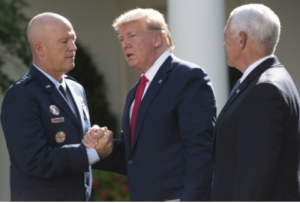
The fiscal year 2020 defense authorization conference bill gives President Trump his coveted sixth military branch, by re-designating the existing Air Force Space Command as a Title 10-authorized Space Force under the Air Force. The FY ’20 National Defense Authorization Act report language and summary, released Dec. 9, involves only Air Force assets for the foreseeable future, but sources said Tuesday that plans remain in place to integrate Navy and Army space capabilities and programs following a series of reports…

 By
By 











